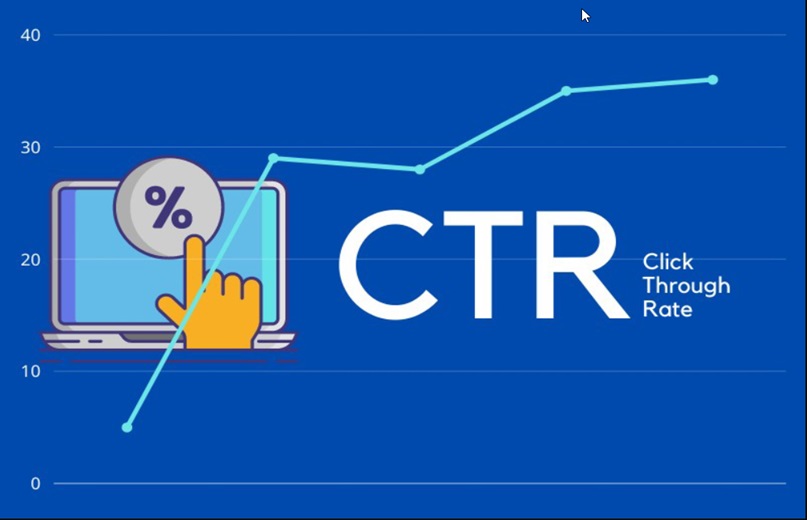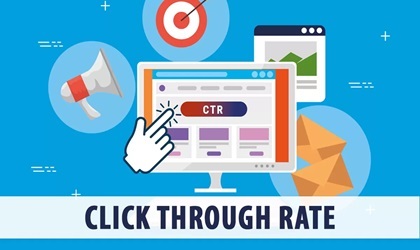
Click-Through Rate (CTR): Understanding Its Importance in Digital Marketing
Click Through Rate (CTR) is a crucial metric in digital marketing that measures the effectiveness of online advertising campaigns, email marketing, and organic search results. It is the percentage of people who click on a link, ad, or call-to-action (CTA) compared to the total number of people who view it. CTR is a key indicator of how well your content or ads are engaging your audience and driving them to take the desired action.

What is Click Through Rate (CTR)?
CTR is calculated by dividing the number of clicks a link or ad receives by the number of impressions (the number of times the link or ad is shown), then multiplying the result by 100 to get a percentage. For example, if an ad is displayed 1,000 times and receives 50 clicks, the CTR would be 5%.
A high CTR indicates that your ad or content is relevant and compelling to your audience, while a low CTR may suggest that the message is not resonating or that the targeting needs adjustment.
Why is Click Through Rate Important?
CTR is important because it directly impacts the success of your online marketing efforts. Here’s why:
- Ad Performance: For pay-per-click (PPC) campaigns, CTR is a vital metric. A higher CTR means you’re getting more value for your money, as more people are clicking on your ads without necessarily increasing your budget. It also affects your Quality Score in platforms like Google Ads, which can influence your ad rankings and costs.
- SEO Impact: In organic search results, a higher CTR can indicate that your meta titles and descriptions are well-optimized and attractive to searchers. Search engines may interpret a high CTR as a signal that your page is relevant to users’ queries, which could improve your rankings over time.
- Email Marketing Success: In email campaigns, CTR helps measure how well your content is engaging subscribers. A high CTR suggests that your emails are effectively prompting recipients to click on your links, which can lead to higher conversions.
- Audience Engagement: CTR is a direct measure of how engaging your content or ads are. If people are clicking through, it means your message is resonating with them, which is crucial for driving traffic and conversions.
Factors Affecting Click Through Rate
Several factors can influence your CTR:
- Ad Copy: The wording of your ad or CTA must be clear, compelling, and relevant to the audience’s needs. Strong, actionable language often leads to higher CTR.
- Targeting: Proper audience targeting ensures that your ads are shown to the right people. If your audience is not well-targeted, your CTR may suffer.
- Visual Appeal: In the case of display ads, the design and visuals play a significant role in attracting clicks. Ads that are visually appealing are more likely to achieve a higher CTR.
- Placement: The position of your ad on a webpage or in search results can affect CTR. Ads placed at the top of the page typically receive more clicks.
- Relevance: The relevance of your ad or content to the viewer’s needs and interests is crucial. Irrelevant content will likely result in a low CTR.
How to Improve Your Click Through Rate
Improving CTR involves optimizing various elements of your marketing campaigns:
- Enhance Ad Copy: Use strong, clear, and actionable language. Include keywords that match the intent of your audience and create a sense of urgency.
- Refine Targeting: Use data and analytics to better understand your audience and refine your targeting to reach the right people.
- Test and Optimize: A/B testing different versions of your ads or content can help identify which elements are driving higher CTRs. Continuously optimize based on performance data.
- Improve Visuals: Ensure that your ads are visually appealing and consistent with your brand identity. High-quality images or graphics can significantly impact CTR.
- Optimize for Mobile: With the increasing use of mobile devices, make sure your ads and landing pages are mobile-friendly to avoid losing clicks.
The Role of Click Through Rate in Digital Marketing
CTR is not just a metric but a critical component of your overall digital marketing strategy. It helps you gauge the effectiveness of your campaigns and provides insights into how well you are engaging your audience. By focusing on improving CTR, you can increase traffic to your website, improve conversion rates, and ultimately drive more revenue.
Security Considerations in Click Through Rate Optimization
When working to optimize your CTR, it’s essential to consider the security and privacy of your digital marketing efforts. Here are some key points to keep in mind:
- Data Privacy: Ensure that the data collected through your ads, such as click data and user behavior, is handled securely and complies with data protection regulations like GDPR. Protecting user information is not only a legal requirement but also builds trust with your audience.
- Secure Ad Platforms: Use reputable and secure advertising platforms that safeguard against ad fraud and malicious attacks. Ad fraud can distort your CTR metrics and waste your advertising budget, so it’s crucial to work with platforms that offer robust security measures.
- Phishing Protection: Be vigilant about phishing scams that may use your ads to deceive users into clicking malicious links. Ensure that your ads and landing pages are secure and that users are directed to safe, legitimate websites.
- Secure Website and Landing Pages: Make sure that the landing pages linked to your ads are secure (e.g., HTTPS) to protect user data during transactions and interactions. A secure website not only protects users but also enhances their confidence in your brand, potentially improving CTR.
- Compliance with Security Standards: Regularly review and update your security practices to ensure compliance with industry standards and best practices. This includes implementing secure authentication methods, encrypting sensitive data, and conducting regular security audits.
Conclusion
Click Through Rate (CTR) is a vital metric in digital marketing, reflecting how well your ads, emails, or content are engaging your audience. A higher CTR indicates that your messaging is resonating with your target audience and driving them to take action. By continuously optimizing your campaigns and focusing on the factors that influence CTR, you can improve your marketing effectiveness and achieve better results in your online marketing efforts.


Leave a Comment